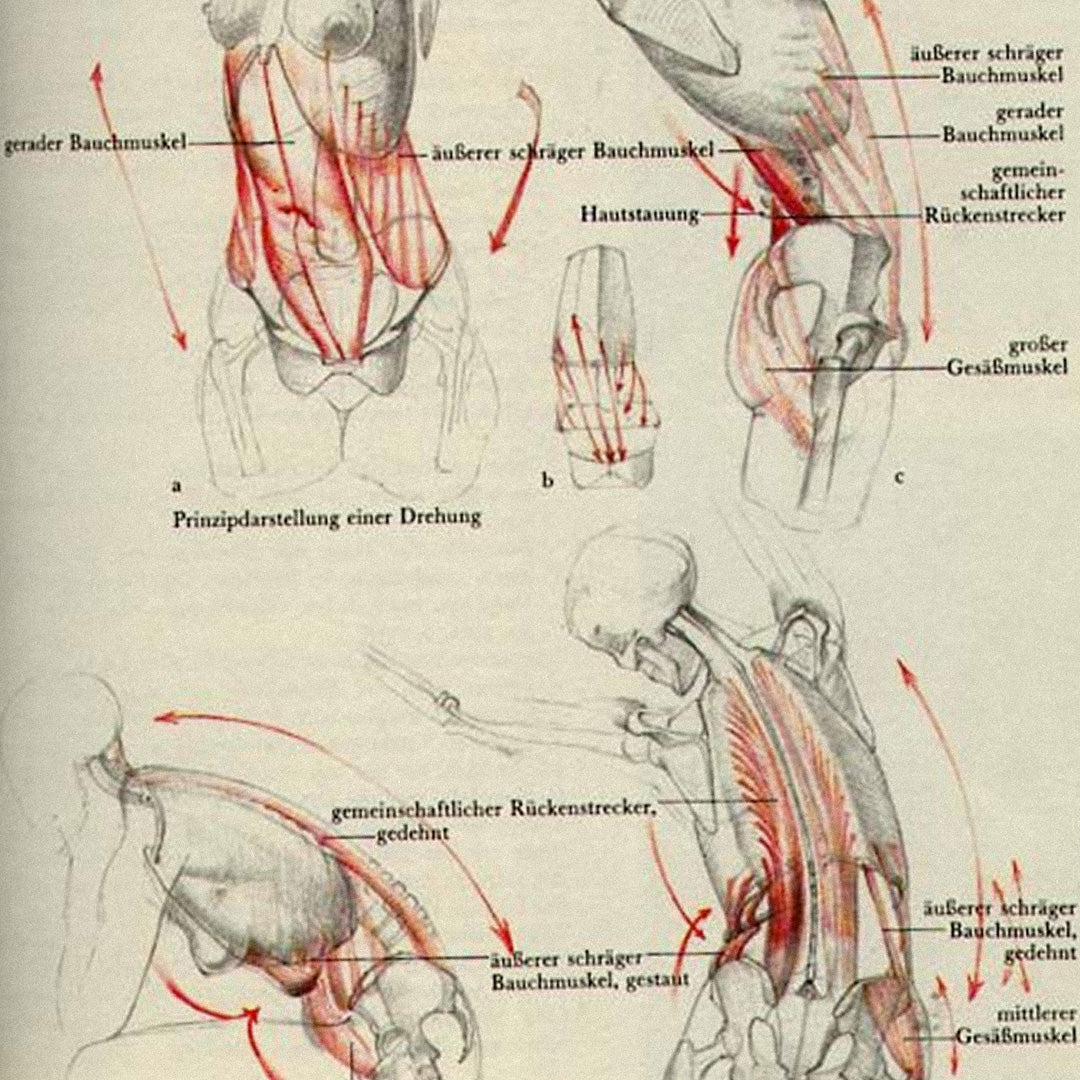What Is Fascia?
Fascia is a thin, fibrous sheath made mostly of collagen that wraps around every structure in your body. It separates muscles and organs, reduces friction and allows them to glide smoothly. Healthy fascia acts like a spring, it stores and releases elastic energy as you walk, jump or sprint and helps transmit force across the body. Because it contains many nerve endings, tight or dehydrated fascia can restrict movement and contribute to pain.
Why Fascia Was Overlooked
For decades, fascia was considered little more than packaging. It was often removed to see deeper structures in anatomy labs and hardly mentioned in medical training. Injuries to the tissue can present as muscle or joint pain and have therefore been misdiagnosed or ignored. Advances in imaging and the rise of myofascial release therapy have helped researchers appreciate fascia’s role in movement and pain.
Keeping Fascia Healthy
You can support your fascia through a few simple habits. Static stretching, where you hold a pose for at least 30 seconds, is most effective after exercise and helps lengthen muscles and fascia. Dynamic stretching uses controlled movements like leg swings or walking lunges before physical activity to warm up the tissue. Foam rolling is a form of self‑massage that uses a roller or ball to apply pressure to tight spots; pausing and breathing on a tender area for a minute or two encourages the tissue to relax. Regular movement throughout the day – walking, gentle yoga or short stretch breaks – keeps fascia hydrated and pliable. Drinking water and practicing deep breathing further improve fascia health.
Common Stretches
Try these basic stretches to improve flexibility in the muscles and fascia that support major joints. Hold each stretch for 30 seconds to two minutes and repeat a few times per side.
-
Quadriceps stretch – Stand upright and grab one ankle, pulling it gently toward your glutes to stretch the front of your thigh.
-
Hamstring stretch – Sit with one leg extended and the other bent; reach toward your extended foot without rounding your spine.
-
Calf stretch – Stand in a staggered stance, keep both feet flat and lean forward to stretch the back of the calf.
-
Shoulder stretch – Extend one arm across your chest and use your opposite hand to press the arm toward your body.
-
Neck stretch – Slowly tilt your head toward one shoulder without lifting your shoulder, hold, then switch sides.
-
Child’s pose – Kneel on the floor, sit back on your heels and stretch your arms forward while lowering your chest toward the ground. This pose gently stretches the back and encourages deep breathing.
Fascia may be invisible, but it plays a visible role in how you feel and move. Far from being inert filler, it supports muscles and joints and stores elastic energy. Regular stretching, foam rolling, daily movement and hydration are simple yet powerful ways to nurture this connective tissue and help you move with ease.
References
-
my.clevelandclinic.orgmy.clevelandclinic.org Cleveland Clinic – definition and function of fascia and the role of hyaluronan.
-
news.northeastern.edu Northeastern University – why fascia was historically overlooked.
-
riversidesportstherapy.com Riverside Sports Therapy – healthy fascia acts like a spring and stores elastic energy.
-
pmc.ncbi.nlm.nih.gov Research article – static stretching reduces fascia stiffness and correlates with range of motion improvements.
-
health.clevelandclinic.org Cleveland Clinic – foam rolling primes muscles and eases soreness and inflammation.
-
health.ucdavis.edu UC Davis – guidelines for stretching frequency and duration.
-
news.northeastern.edu Northeastern University – daily practices to maintain healthy fascia, including self-massage, stretching, walking, breathing and hydration.
